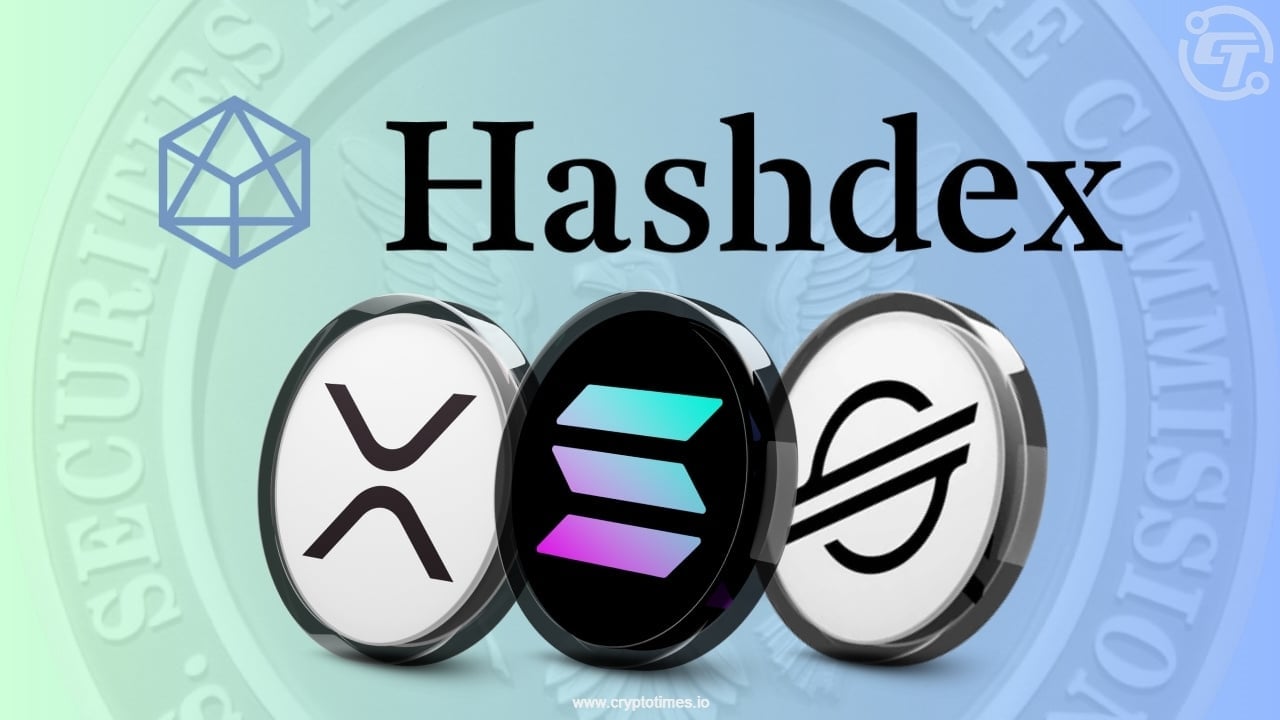Key Points:
-
Hashdex has broadened its Crypto Index US ETF to include XRP, SOL, and Stellar (XLM).
-
The expansion follows the SEC’s new generic listing standards, enabling faster approvals for crypto ETFs.
-
Analysts predict a surge in U.S. crypto ETF filings, potentially boosting institutional and retail access to digital assets.
Hashdex Enhances Crypto ETF Amid Regulatory Tailwinds
Asset manager Hashdex has expanded its Nasdaq-listed Crypto Index US exchange-traded fund (ETF) to incorporate XRP, Solana (SOL), and Stellar (XLM), bringing the fund’s total holdings to five cryptocurrencies. The ETF, trading under the ticker NCIQ, continues to hold Bitcoin (BTC) and Ether (ETH) at a 1:1 allocation alongside the new additions.
The move comes in the wake of the U.S. Securities and Exchange Commission’s (SEC) approval of generic listing standards for ETFs in September. The new regulatory framework allows for a faster approval process for eligible cryptocurrencies, creating a potential gateway for both institutional and retail investors into diversified crypto exposure.
SEC Generic Listing Standards: What They Mean
Under the SEC’s generic listing rules, a cryptocurrency must meet specific criteria to qualify for inclusion in a U.S.-listed ETF. Eligible digital assets must be classified as commodities or have futures contracts listed on reputable exchanges. Additionally, the tokens must be subject to oversight by the US Intermarket Surveillance Group to ensure price transparency and prevent market manipulation.
“Generic listing standards mark a pivotal moment for the U.S. crypto ETF market,” said Marina Rinaldi, a senior analyst at CryptoMarkets Research. “Investors now have faster access to diversified crypto products without waiting for protracted approval processes that have historically slowed market adoption.”
The approval also represents a critical milestone for Hashdex, as its Crypto Index US ETF becomes only the second multi-asset cryptocurrency investment vehicle approved for trading in the United States.
Market Implications and Investor Sentiment
The inclusion of XRP, SOL, and XLM broadens the fund’s exposure to alternative layer-one and payment-focused cryptocurrencies, which analysts view as a strategic enhancement for performance and diversification. XRP, for instance, has recently recovered above $2.70, while Solana and Stellar are trading at $196 and $0.35, respectively, positioning the ETF to capture upside potential in high-growth crypto segments.
Market participants have responded positively, with industry executives noting that the generic listing standards may trigger a surge of new filings from crypto ETFs seeking to replicate the Hashdex model. The increased product availability is expected to attract a mix of institutional investors seeking regulated exposure and retail participants looking for traditional trading access to digital assets.
Strategic Considerations and Forward Outlook
Hashdex’s ETF expansion comes at a time when U.S. regulatory clarity is improving, signaling an inflection point for crypto adoption within traditional financial markets. By offering multi-asset exposure in a single regulated product, ETFs like NCIQ reduce operational friction, enabling investors to gain diversified digital asset exposure without navigating wallets, exchanges, or custody solutions.
Analysts suggest that over the next 12 to 24 months, the SEC’s generic listing framework could catalyze a wave of new crypto ETFs, potentially reshaping the U.S. digital asset landscape. While risks such as market volatility and regulatory shifts remain, investors and institutions alike may view these developments as a signal that crypto products are entering the mainstream of U.S. capital markets.













https://shorturl.fm/v4V2s
https://shorturl.fm/TqFiC